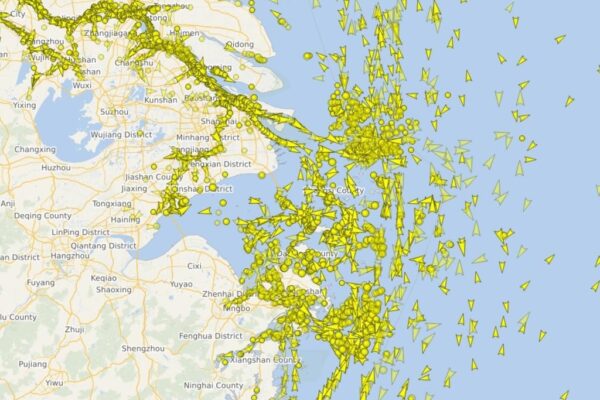According to a study by the Royal Bank of Canada (RBC), one in five vessels in the global container ship fleet is stuck in congestion at a major port. Vessel tracking images (above) show the scale of the problem, with thousands of ships milling off the coast of China, causing long delays and rising prices for Australians.
It didn’t take long for the impact of the Shanghai lockdown to be felt on supply chains. In just days, the number of ships waiting for a berth at the port of Shanghai began to rocket. As of 03 May, 344 container ships were waiting to dock.
Six months ago, we wrote that “the supply chain is now the hot topic” among the general public. Now, in what News.com.au has dubbed “Chain Supply Crisis 2.0” we are feeling the real-time impact on things like construction equipment, cars, petrol prices and electronics – especially computer chips, which are essential to the production of smart phones, computers and vehicles.
The crisis is compounded by a shortage of shipping containers – or, more correctly, containers being stationed in the wrong place at the wrong time.
Considering that pretty much everything with a ‘Made in China’ label on it is being impacted in one way or another by the ongoing lockdowns, delays are commonplace and shortages in some products may result. What we are experiencing is a huge demand for shipping coupled with reduced capacity.
Australians are being warned to brace for continued delays and price increases on imported goods for the remainder of the year. More than one-quarter of goods imported into Australia come from China, including $15 billion worth of electronics, $14 billion worth of machinery and $5 billion worth of clothing.
The article by News.com quotes ANU supply chain management expert David Leaney who, in an interview aired on radio 3AW last Tuesday, said the delays and price increases were being seen “across everything from light machinery to clothing and whitegoods”.
“Construction has certainly got some of the biggest delays,” he said. “The lead time to get timber frames if you’re building a house is 46 weeks. Light machinery, outboard motors. In the motor vehicle industry, buying a new car we’re talking 12 to 18 months’ worth of delay.”
Mr Leaney said generally the disruptions at the moment were in terms of weeks or a few months, but that those disruptions are going to continue for quite a long time. “The heart of the issue is the unevenness of the current global world supply chain,” he said. “The issue is around dock workers and crane operators and truck drivers in the ports of China – Shanghai is the world’s number one, Shenzhen, Ningbo, other ports around China, they’re the main cause behind this.”
The number of containerships waiting outside of congested ports has risen sharply in recent months, with the figure of 20% of all containerships trading globally being stuck in backups confirmed by maritime data intelligence firm Windward. Widespread COVID-19 lockdowns in China have heavily impacted congestion outside that country’s ports, with the number of waiting ships more than doubling since lockdowns first went into place—climbing from 206 in February to 506 in April, according to Windward.
Vessel tracking images show the scale of the problem, with thousands of ships milling off the coast of China. According to the available data, the global liner fleet has 6,358 active ships around the world. Between April 12-13, a total of 1,826 of those containerships were waiting outside congested ports around the world. Of these, 506 containerships were stuck outside of China’s ports – with the main bottleneck being around Shanghai.
China’s ‘zero-tolerance’ Covid policy is behind the chaos with both sea cargo and airfreight consignments, particularly at Shanghai, a city of 25 million people – the same size as the population of all Australia.
For containerised sea shipments, this has resulted in a lot of shippers trying to re-route cargo from Shanghai through Ningbo, especially those in Jiangsu, Anhui and Sichuan provinces. The port city of Guangzhou has also been undergoing mass Covid-testing.
While Australian industry and retailers have done their best to cope with the challenges that supply chain issues have thrown at them, this additional hurdle will create further problems later in the year, as delayed shipments and production begin to feed into their inventories.
The chaos is predicted to continue for the rest of 2022.
For professional advice about international shipping, whether from China or elsewhere, contact us here at Colless Young. As licensed Customs Brokers and International Freight Forwarders, we handle all your transport needs, both import and export. We are based in Brisbane and offer a complete range of logistics services, by airfreight and sea cargo, through all Australian ports and airports.

